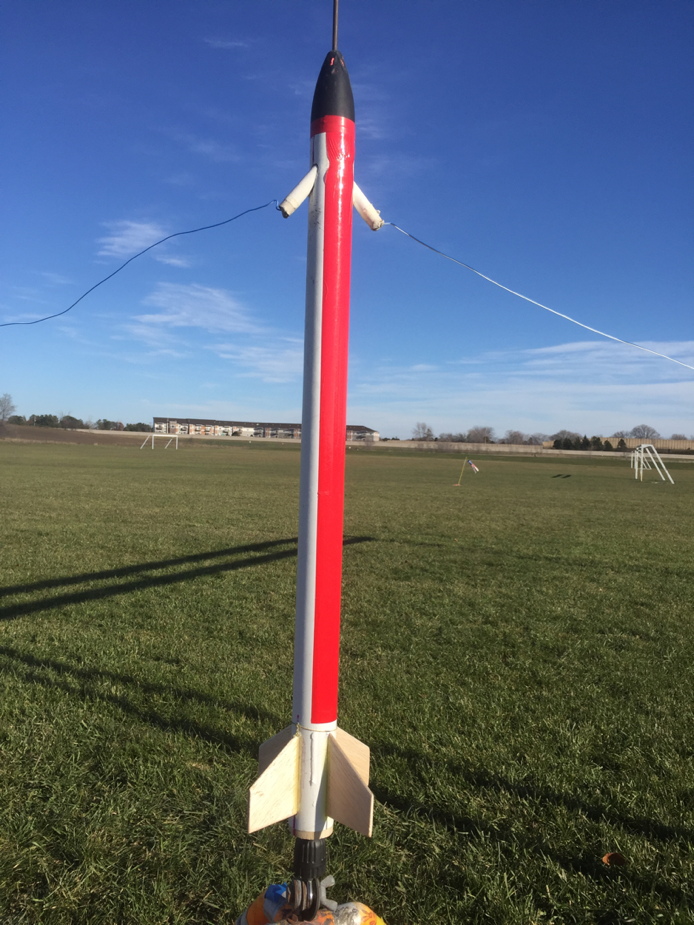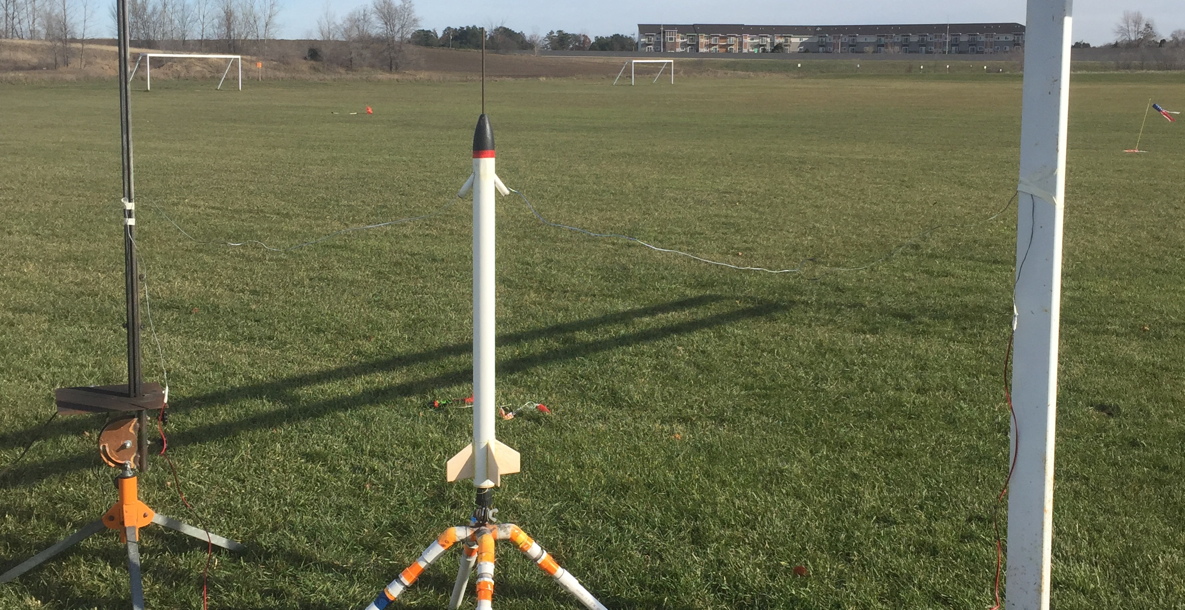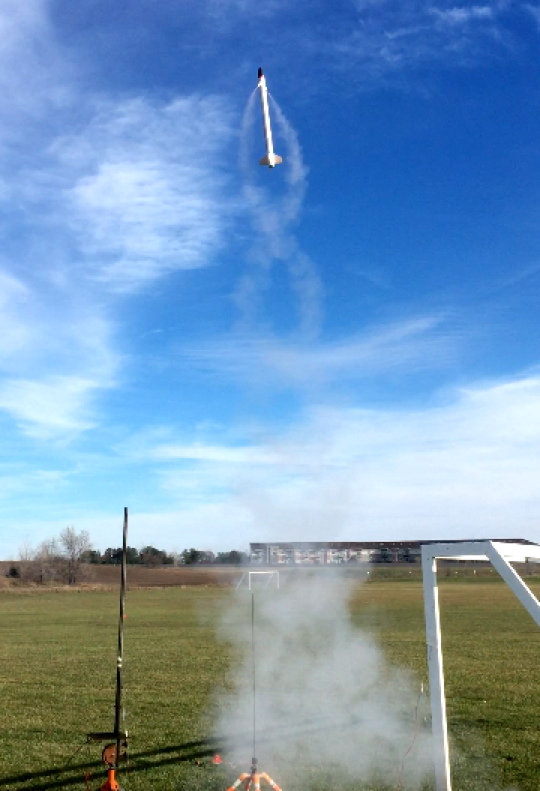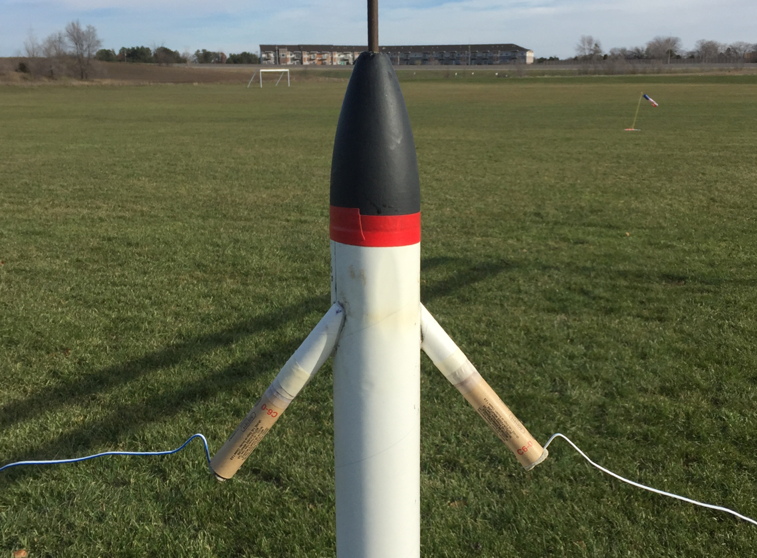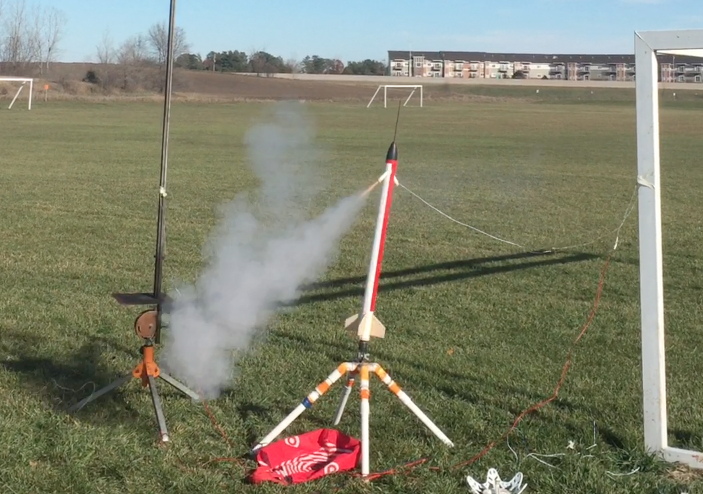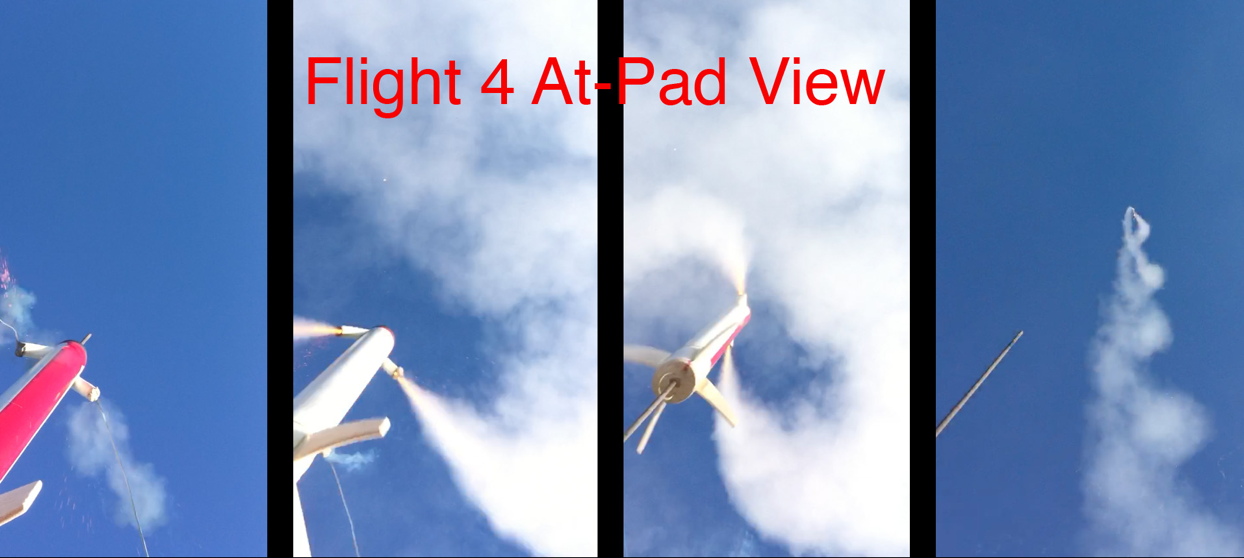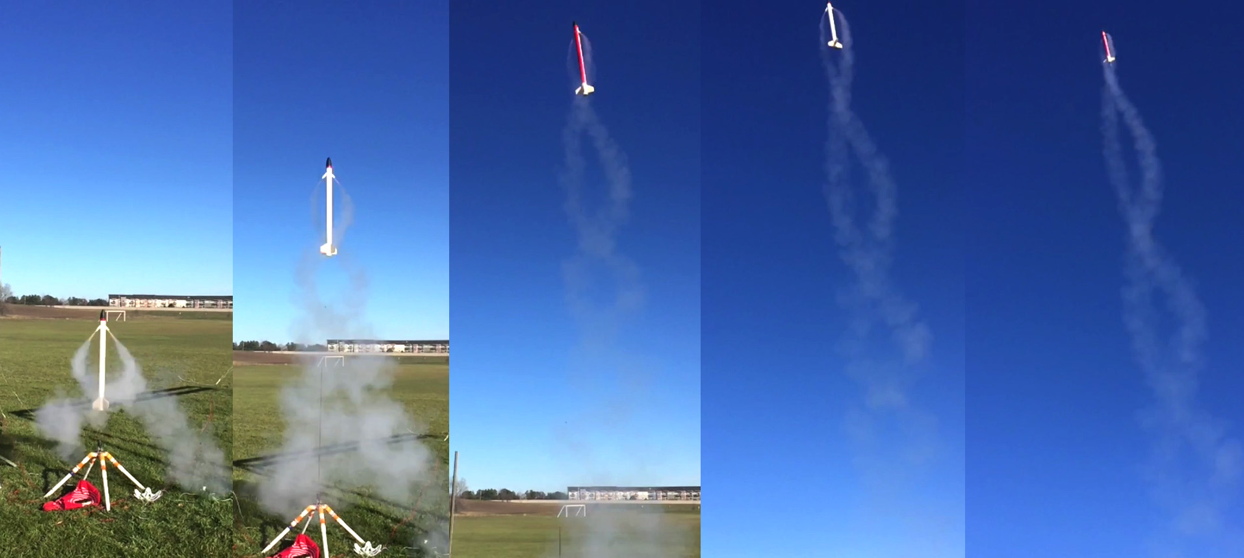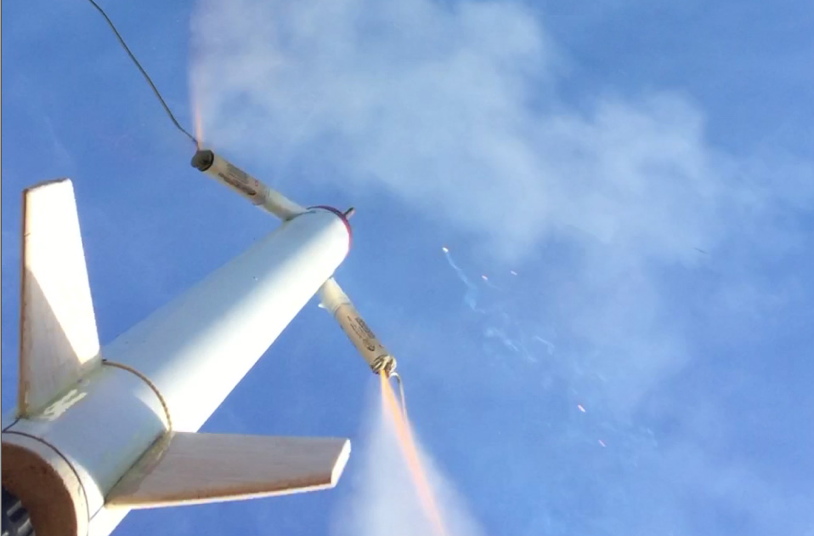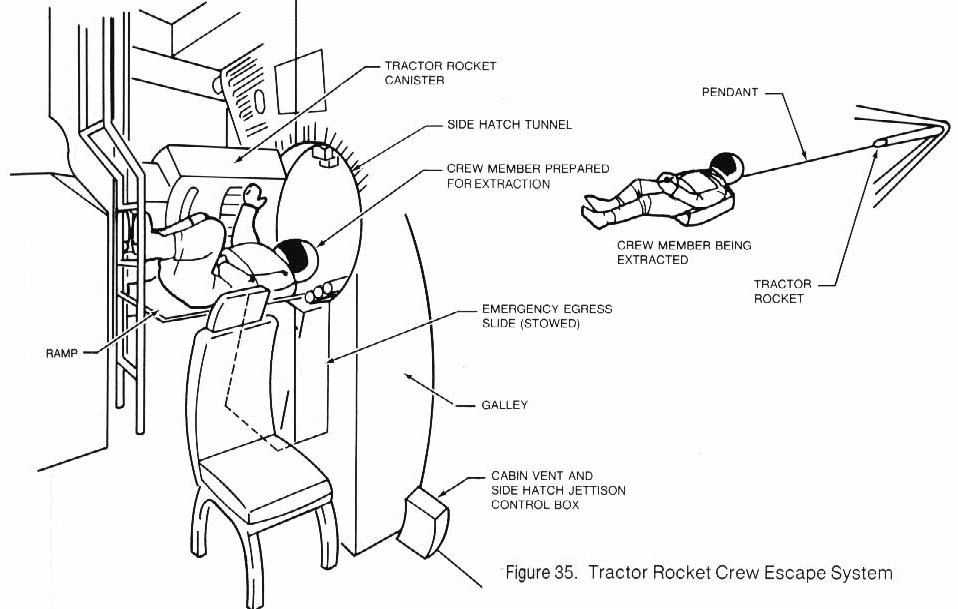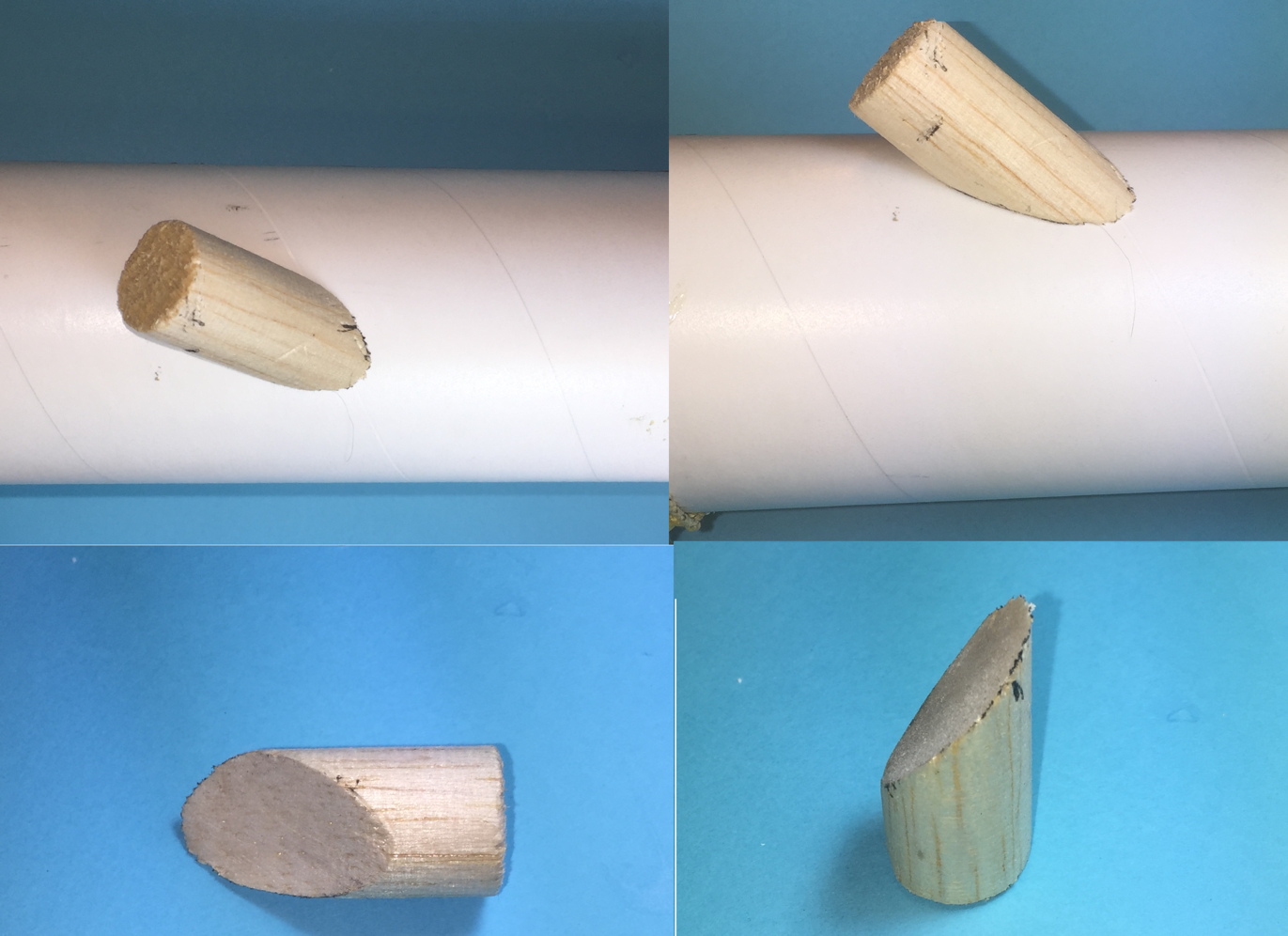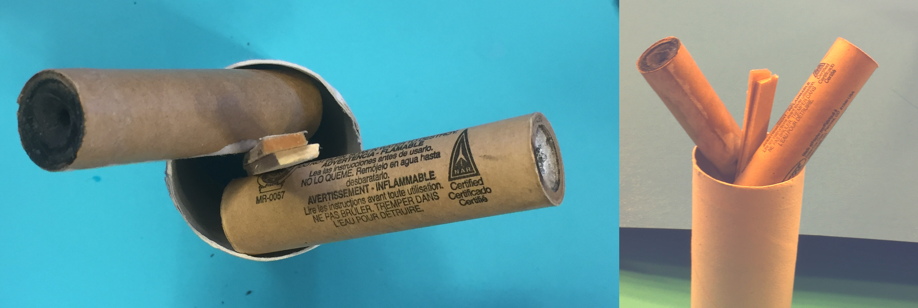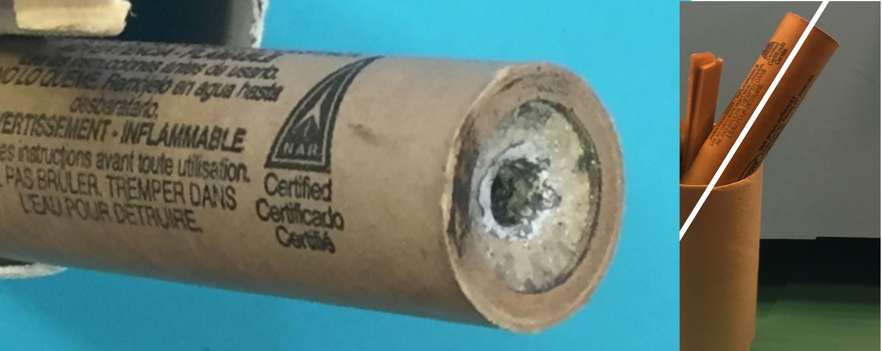Flew the Tractor Helix rocket a few more times at the Nov 20th MASA launch.
Due to the club’s set-up at the field, one of the side umbilical posts I used was a soccer goal. The other was a pad with a rail when nobody else needed to use it. I had a couple of long rods to stick into the ground, but those were more convenient and secure.
Flight one went very well, mostly vertical, in wind of 7-9 mph.
Flight two was Chad-staged, using a C6-0 taped securely (Scotch tape) to the upper C6-3, in each mount.
It took off and weathercocked some. It is more nose heavy with two extra engines up front, so that may account for a good bit of that. Anyway, also, at staging it “veered” a bit, to make it get even more horizontal. Later, I saw from the at-pad-looking-up video, that one engine staged 7 frames before the other engine (that’s about 1/4 second difference, which is a pretty big mismatch for the high thrust spike of the engine that staged first). So, it may have by coincidence pitched more horizontal due to the direction it was rolled (meaning, if the opposing engine 180 degrees away had staged first, it might have actually veered a bit back towards vertical).
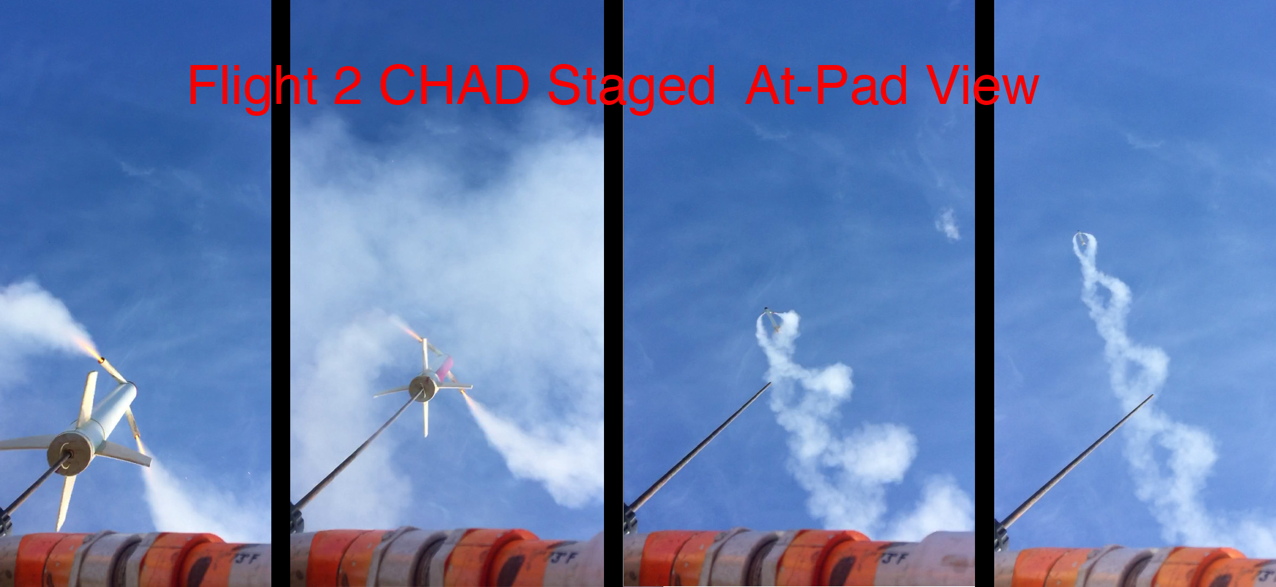
And definitely it stopped rolling during the second stage burn. Not only does the smoke trail stop being a helix, but the pulsating thrust sound goes away into a constant “normal” thrust sound at high altitude. Weird. The same had been noticed on the previous CHAD-staged flight, but the at-pad camera did not show that as clearly (both staging “puff” moments) as with today’s flight 2.
Fortunately, it ejected before hitting the ground, landing far away mostly upwind. Definitely if I stage it again as-is, it will need to be pretty calm. Or else do the C6-0 to C6-0 (with BP charge) trick. If I really want for it to keep rolling when CHAD staged, I’d add some spin tabs to the fins.
Flight three…..actually didn’t happen but I call it that anyway. Only one engine lit, and…….it stayed on the pad. That was a good surprise, that it didn’t get into the air, so no damage. It was not the ignitor’s fault, it was a clip whip not making the proper electrical connection to set it off, I did not double-check it as I should have.
Flight 4, one of the e-match ignitors was the same one that did not fire before, because it was not at fault. Single stage, two C6-3's. Ignition was great, and it took off very well for a mostly vertical flight, best so far.
The chutes have gotten worn out (Main chute lost half its lines even though it’s a reinforced over-the-top type chute. Just….old and worn out. Like, one is 10-15 years old, and I borrowed the 12” chute from a model built in the early 1990’s). So I need to make new ones before it flies again. And the next club launch won’t be till late January. Do not say nylon/cloth chutes, the chute packing space is way too limited due to the axial lug running thru it.
These flights were my first time using e-Matches that fit model rocket nozzles, from MJG Technologies (they say they fit in 13mm BP engines like 1/2A3, have not tried yet). They worked great for this model, so no more using precious OOP Q2G2 ignitors. They come in 12” & 36” lengths, for 3 cents more I went for 36” since this model can make good use of that length for the twin umbilicals so far apart.
https://electricmatch.com/roc.../see/23/6/bp-rocket-starters.
To help make sure of a “clean” separation of the e-Matches when the engines ignited, I could not use tape to help hold them (that was the prime cause of taking up the leads a few weeks ago). So, I used a window putty sort of like modeling clay, but it does not melt in sunlight in summer. On a cold day like this, it is stiff and did not stick to the nozzles too well, but I managed to get it to work out. Though one time, the wind eventually caused one to wiggle out.
I was surprised to see in slo-mo of the at-pad video for flight 2, Chad-staged, that the model started to rotate the opposite of normal, as the motors began to ignite. Then I realized the putty plugs were causing exhaust to vector a bit sideways for a moment, and the CHAD staged nozzle distance gave extra leverage to cause the roll the opposite way for a moment. But that had no effect on flight, the model was rolling the other (normal) way before it moved much up the rod. The screenshot below, you can see the moment of ignition, with exhaust being momentarily deflected by the putty (note the sideways engine exhaust at upper left, and non-parallel flame at lower right).
Yet again, the odd stuff you sometimes see with an at-pad camera view like that.
I had tack-glued the axial lug assembly in, and it has come loose, sliding out at ejection (the two 1/2” vent holes are not big enough. I kept sliding it back into place. And the fit with the nose cone’s sleeve tubing (Tube #3) is not good anymore. So I need to do some overhauling of that lug system. What I really wish I had was a stiff fiberglass tube (more like arrowshaft or kite spar, not rocket tube), that was a bit more than .25” I.D, and some sleeve tubing to fit over it, rather than the paper tubes I have been using. But shipping is cost-prohibitive to order just a couple of such things (No, Amazon, I do not need to buy 12 arrowshafts for $49 with free shipping, even if the I.D. was right. Or buy one from elsewhere for $15 shipping).
I’m really happy with how well this model flies.
So, yes, of course there is video.










